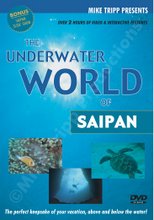Wholly shit! Guess I’ll remember this one!
 I’ve felt my share on Saipan and in a few other places but not like this.
I’ve felt my share on Saipan and in a few other places but not like this.What made this especially scary was not only seeing how much the building moved but also the fact I’d just left the kids, Mom and Nana waiting for the elevator on the top floor of a building built in 1925. I’d barely taken two steps back into our 83-year-old room when I was forced to stumble and catch my footing. It nearly knocked me over!
Boom! It was quick! Time enough for a “wholly shit” realization and a real quick coyote breakfast (Coyote breakfast = A quick look around and a piss). No I’d didn’t loose control of my bodily functions but, man that was scary. The walls were moving and bending, no question about it. It felt and looked like feet but I doubt it was that much although it did knock things off the TV and cause drawers to open. With the streets of downtown LA far below our window it did briefly enter my mind to run and take a look at the action below.
Instead I turned and ran out the door to see (thankfully) the stroller coming towards me with adults looking a little uncomfortable to say the least while the kids where carrying on quite normally.
Twelve flights of stairs later my heart was still going and I can tell you it wasn’t from the physical exertion of caring a 2 &1/2 year old all the way down. It took a good 10 minutes in the lobby with everyone there talking about what had happened before the legs didn’t feel quite so shaky and the ticker had lost that flight or fight response!
Mom and Nana were happy not to have gotten in the elevator; a few seconds latter and they would have been on the ride of their lives. I’m not sure how keen the little one would have been from that point on for her much-anticipated Alligator rides (Alligator = Morgan for elevator)
I’m not sure how keen I am of staying here tonight but for now there’s a birthday to remember!
Here's the BBC story.







